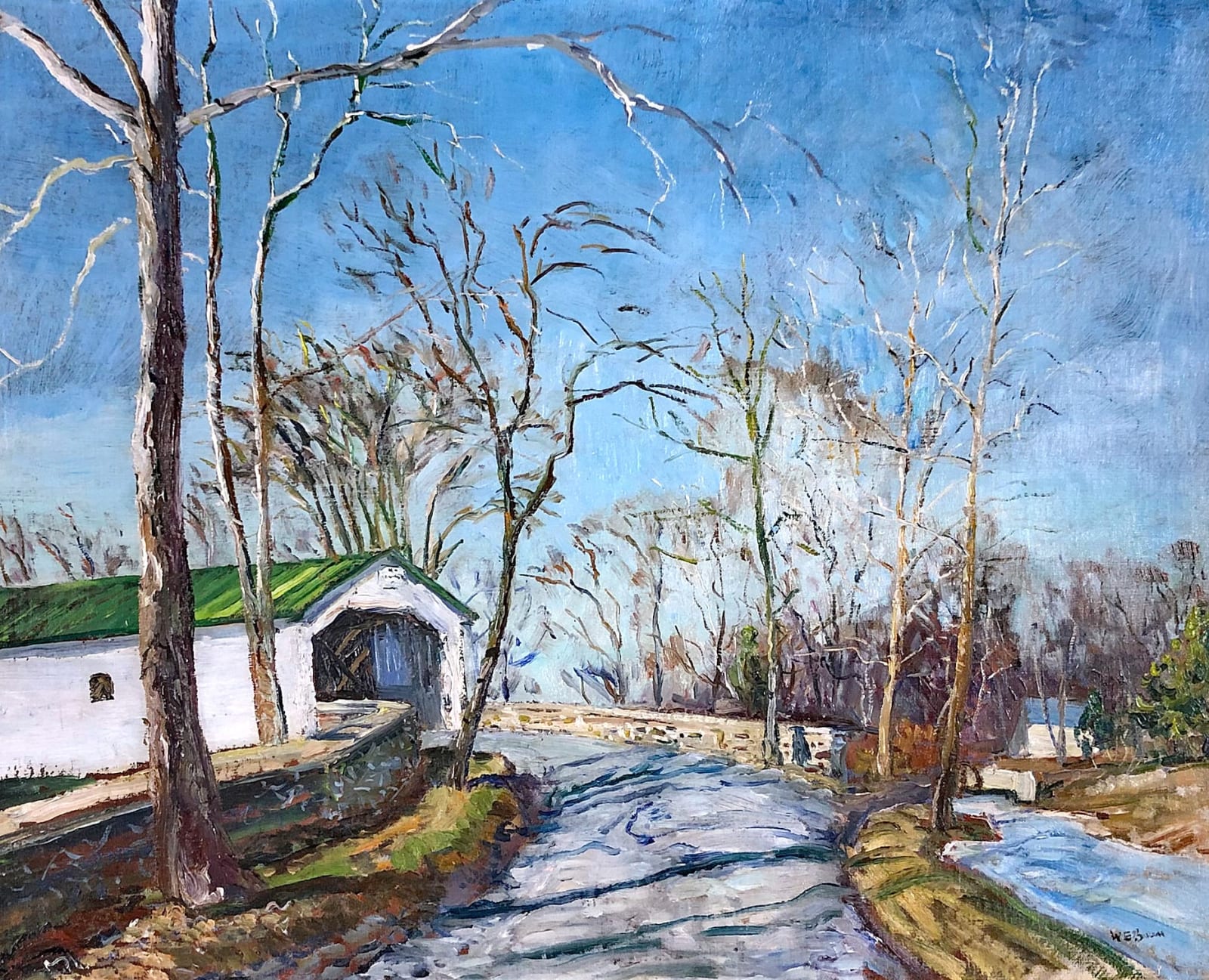Walter Emerson Baum 1884-1956
40.6 x 50.8 cm
Framed dimensions: 23 x 27 1/8 inches
He received his initial training in 1904 from William Trego, a skillful American painter of military scenes. In 1910, he entered the Pennsylvania Academy of the Fine Arts, where he studied with Thomas Eakins and Thomas Anshutz. Daniel Garber, an influential member of the New Hope Landscape School, and member of the Academy's faculty, also influenced Baum's work and style.
Baum often painted seasonal changes working en plein air, occasionally painting snowstorms in the snowstorm itself. In 1936, he traveled to Southern Germany, France and Switzerland, where he painted local scenes and visited many museums. His trip was relatively short, as he was eager to return home and resume painting the scenery of the Delaware Valley.
Baum's oeuvre, more than 2,000 works in oil, tempera, watercolor, and pastels, may be divided into two distinct groups, different both in style and subject. The majority of his work was landscape painting. He captured the seasonal changes of the Delaware River Valley and preserved for future generations the uniqueness of the region. The remainder consist of cityscapes of Allentown and Manayunk, both in Pennsylvania. These paintings reflect small town atmosphere, depict local architecture and quaint streets. Although executed with the same lusty brushwork as his landscapes, the cityscapes display a greater intensity of pure color, with many of the buildings and other objects are outlined in black.
In 1921, Baum began teaching art and founded the Baum School of Art in Allentown. For thirty years, ending with his death in 1956, he worked as art editor and critic for the Philadelphia Evening and Sunday Bulletin newspapers, writing more than 500 reviews.
His works are found in many public collections including the Philadelphia Museum of Art, Syracuse University Art Collection, Allentown Museum of Art, Reading Public Museum, James A. Michener Art Museum, Butler Institute of American Art and the Pennsylvania Academy of the Fine Arts.
